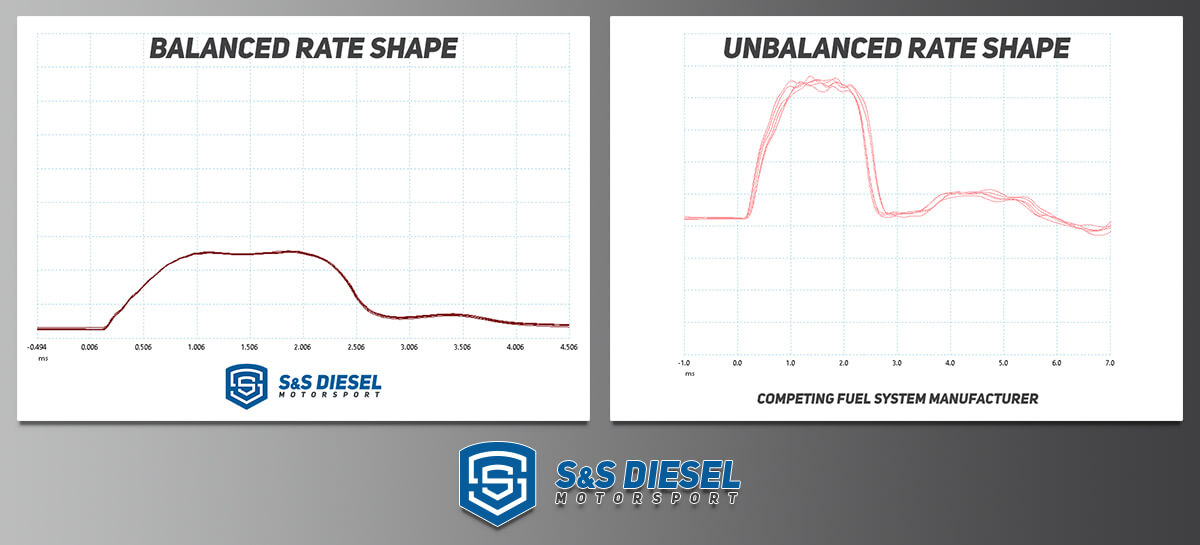There’s more to high-performance common-rail diesel injection than nozzle size, at least for S&S Diesel Motorsport. In a perfect world, fuel injectors would open exactly when they are electrically energized, in the real world there are fluid dynamics to contend with, and injection rate shape tells us exactly what the injectors are doing during, and after, the energizing time. Proper common-rail injector nozzle flow is measured using calibration fluid at standardized and tightly controlled temperature and pressure. This is typically published in units of cubic centimeters per min (cc/min) and is presented to the public as a percentage increase from stock flow. Percentage over stock has become the industry standard designation for injector size, yet that number is based off of the nozzle only. In theory, a 100% over-stock injector will deliver twice the fuel as a stock injector during energizing time, but that only accounts for nozzle flow. What if the injector can open and close quicker, or have higher peak flow during the same energizing time? That is where injection rate shape comes in. Rate shape is a curve that shows injection quantity over time for each individual injection event. The area under the curve being the total quantity injected. Rate shape is a tool that we use to first see, and then balance each set of injectors to not only total quantity, but complete injection profile.
This technology is not available to the majority of fuel system manufacturers, and without the ability to see the rate shape, they fall short on balancing when and how the fuel is injected. Since the area under the curve is total quantity, it’s possible for many different rate shapes to net the same amount of fuel. Having control over injection rate shape allows us to build more advanced and precise common-rail diesel fuel injectors that are calibrated as a set for a specific application.
